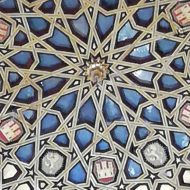The Feria neighborhood is part of the Casco Antiguo district, one of the 11 districts into which the city of Seville is divided.
In addition to calle Feria, it is made up of the Alameda de Hércules and adjacent streets, such as Faustino Álvarez, part of calle Relator and all the streets that connect the Alameda to calle Feria.

The entire neighborhood is experiencing a period of expansion with the arrival of young families and children, having deteriorated greatly in the late 80s of the last century. New buildings, bars, shops, restaurants, markets, etc. they have made it one of the fastest growing areas of the city.
Originally, Feria, integrated in the Old Town, was part of the walled enclosure that surrounded the entire ancient city since the time of the Romans, in fact it is said that Jules Cesar ordered them to be built in 68 BC while he was quaestor of Seville (Hispalis). In the ninth century they had to be rebuilt after the attacks of the Vikings who suffered the city.

The walls that we can see today are not Roman heritage but they are the ones built by the Almohads in the 11th century to defend Seville against Christian troops.
Much of these walls survived until the nineteenth century when they were demolished after the 1868 revolution and now we can only see a part of the walls near the Basilica de la Macarena and in the Royal Alcazars.

There were also a large number of doors of which only three survive today: Postigo del Aceite, near the Cathedral, Puerta de Córdoba, not far from the Basilica de la Macarena and the Arco de la Macarena, in front of the Basilica de la Macarena .
However, Sevillians continue to use the names of doors that no longer exist, such as Puerta de Carmona, Puerta de Jerez, Puerta de la Carne, Puerta Osario, which remind us of the locations of these entrances and exits of the city as well as the perimeter of the already disappeared wall.
As a curious detail, the last vestiges of the Puerta de Triana that was in the current street of Reyes Católicos at the intersection with calle Julio César, can be seen in the Jerez Zoo, two large stones that were once part of a deposit of water.

Although, as we have said, the Feria neighborhood is part of the Casco Antiguo district, its relations with the surroundings of the Macarena make many Sevillians feel it more as part of the Macarena than in the downtown area of Seville. The environments of Feria, San Luis, San Gil, Relator, Becquer, etc. they are intimately linked to the Hermandad de la Macarena, the true heart of this part of Seville.

